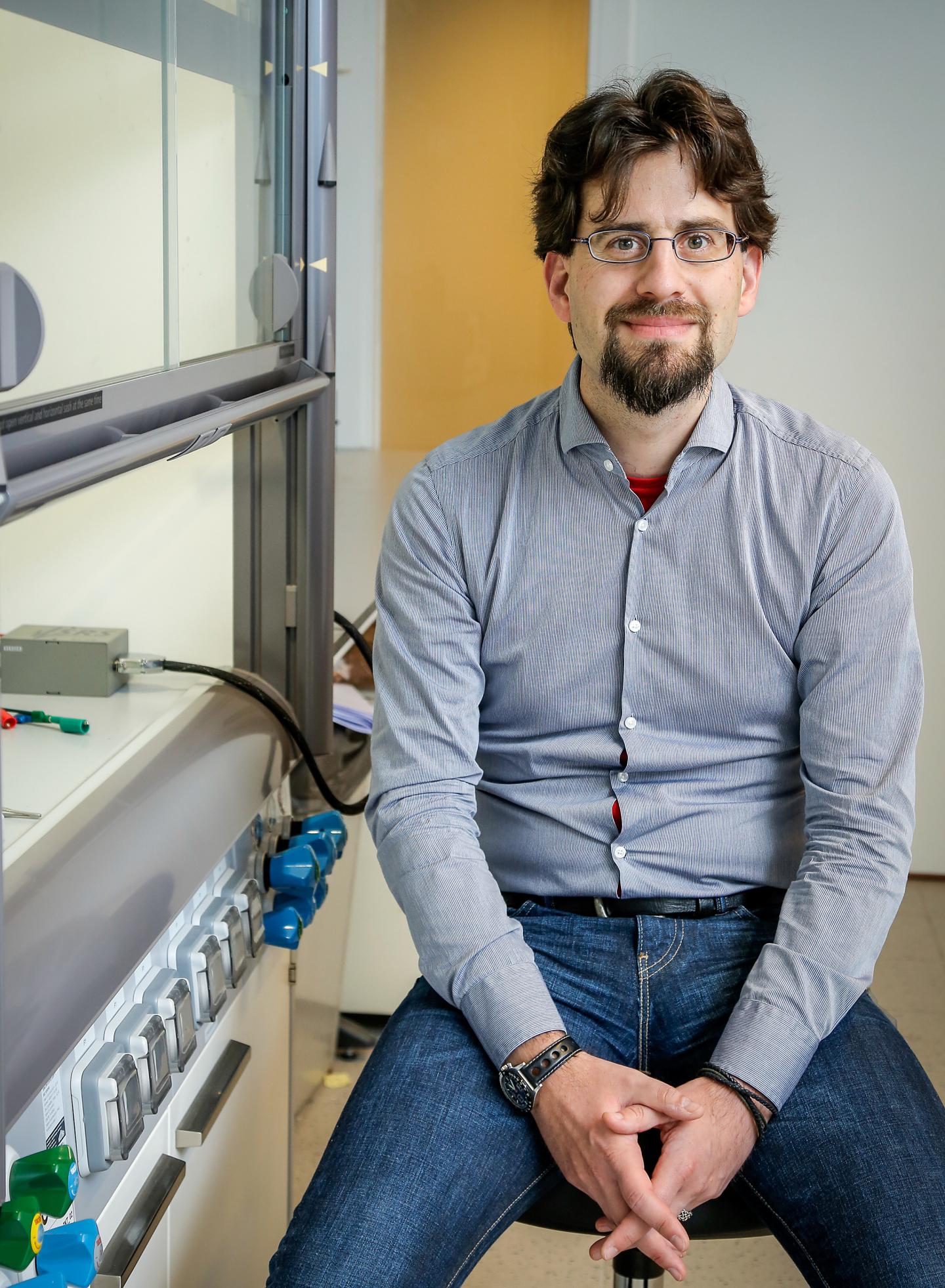
Credit: KU Leuven – Rob Stevens
Companies are keen to use miniature chemical reactors to make pharmaceuticals and fine chemicals, but are discouraged by their tendency to clog up. Researchers at KU Leuven, Belgium, have now devised an elegant way of using sound waves to keep the chemicals flowing.
The chemical industry conventionally produces in large batches, but this approach has drawbacks. From an environmental point of view, it uses a lot of energy and produces large volumes of waste solvent when the reactors are cleaned. Then there is the cost and inconvenience of storing the chemicals produced until they are needed, or transporting them to where they will be used.
Smaller reactors that produce a continuous flow of the desired chemical product, when and where it is needed, are seen as a much smarter solution. But these miniature reactors, with internal volumes from a couple of microlitres to a couple of millilitres, have a tendency to clog up if particles are produced in the reaction, or required as catalysts.
This is the problem that Professor Simon Kuhn and Dr Zhengya Dong in the Department of Chemical Engineering at KU Leuven set out to solve. Their research, published in the Royal Society of Chemistry journal Lab on a Chip, was carried out in collaboration with the University of Twente in the Netherlands.
It was already known that ultrasound (sound waves with frequencies too high for humans to hear) could be used to move particles around in a liquid. The challenge was to find a way to apply the ultrasound force within the narrow channels of a microreactor.
Their first thought was to use low-frequency ultrasound to shake the clumps of particles apart. “But this is very violent, and heats up the reactor,” Professor Kuhn explains. “You form these cavitation bubbles – small liquid-free zones – which destroy your particles, but then they also destroy your reactor.”
Their next idea was to use higher frequencies, which, if correctly focused, would push the particles away from the reactor channel walls and stop clogging that way. To achieve this, the reactor had to be very precisely engineered, with channels just half a millimetre wide etched into the surface of a silicon plate that could be integrated with the ultrasound source.
The scientists tested the prototype reactor with calcium carbonate and barium sulphate, which react very strongly and very quickly to form an inorganic salt. This rapidly forms large clumps of particles. While not useful in itself, the salt provides the toughest test possible for the reactor. “If you can do it with these particles, you can do it with anything else.”
Not only did the ultrasound keep the product flowing smoothly, forcing the particles into the centre of the channel helped mix them, and so improved the efficiency of the reaction.
The next step is to scale-up the process, although not by making the reactors bigger. “If you can produce a couple of grammes per second, that’s already pretty good,” Professor Kuhn says. “If you then run a couple of reactors in parallel or in series, you can reach a level of productivity that is interesting for industry.”
The study falls within the scope of a basic research grant from the European Research Council (ERC). “While these projects are about fundamental, blue-sky research, we are not just doing research for the sake of it,” Professor Kuhn says. “We are developing a technology that is really relevant for industry as well.”
###
Media Contact
Simon Kuhn
[email protected]
Original Source
https:/
Related Journal Article
http://dx.




